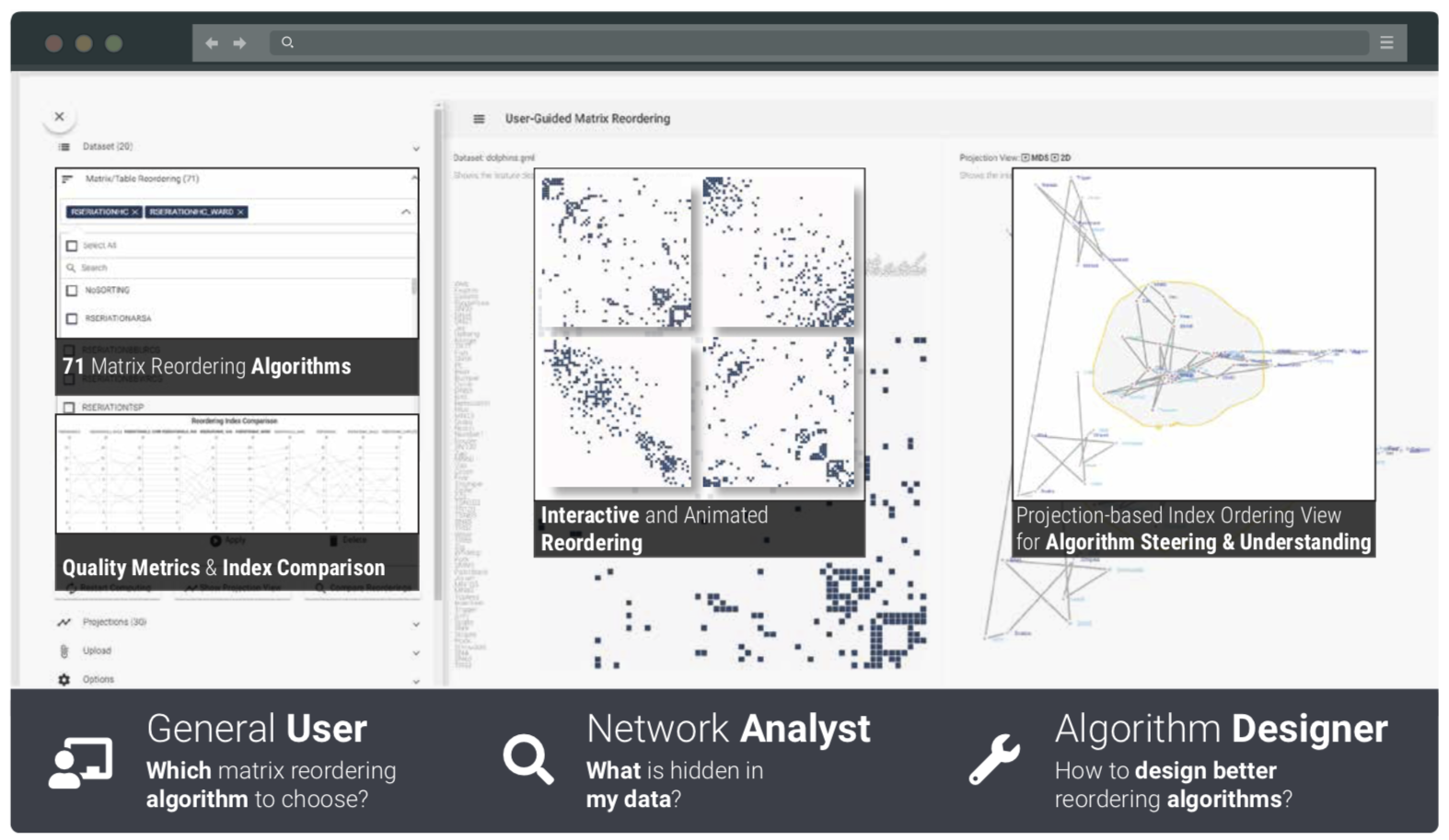
Guiro: User-Guided Matrix Reordering
IEEE Transactions on Visualization and Computer Graphics, 2019.
Matrix representations are one of the main established and empirically proven to be effective visualization techniques for relational (or network) data. However, matrices —similar to node-link diagrams— are most effective if their layout reveals the underlying data topology. Given the many developed algorithms, a practical problem arises: “Which matrix reordering algorithm should I choose for my dataset at hand?” To make matters worse, different reordering algorithms applied to the same dataset may let significantly different visual matrix patterns emerge. This leads to the question of trustworthiness and explainability of these fully automated, often heuristic, black-box processes. We present GUIRO, a Visual Analytics system that helps novices, network analysts, and algorithm designers to open the black-box. Users can investigate the usefulness and expressiveness of 70 accessible matrix reordering algorithms. For network analysts, we introduce a novel model space representation and two interaction techniques for a user-guided reordering of rows or columns, and especially groups thereof (submatrix reordering). These novel techniques contribute to the understanding of the global and local dataset topology. We support algorithm designers by giving them access to 16 reordering quality metrics and visual exploration means for comparing reordering implementations on a row/column permutation level. We evaluated GUIRO in a guided explorative user study with 12 subjects, a case study demonstrating its usefulness in a real-world scenario, and through an expert study gathering feedback on our design decisions. We found that our proposed methods help even inexperienced users to understand matrix patterns and allow a user-guided steering of reordering algorithms. GUIRO helps to increase the transparency of matrix reordering algorithms, thus helping a broad range of users to get a better insight into the complex reordering process, in turn supporting data and reordering algorithm insights.